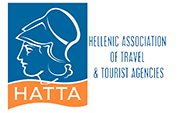Ancient Stones & Living Faith: A Journey Through Greece Monasteries
I've been guiding folks through Greece's sacred spaces for 15 years, but that first glimpse of Meteora still leaves me breathless every single time. Picture this: massive stone pillars shooting up from the earth like giant fingers reaching for the clouds, each topped with centuries-old Greece monasteries that seem to thumb their nose at gravity itself.
"How on earth did they build these?" whispered Anna, an American tourist, her camera clicking frantically as we approached.
I couldn't help but smile. It's always the first question everyone asks.
"With a healthy dose of faith, pure stubbornness, and a crazy-clever system of ropes, nets, and wicker baskets," I told her. "For nearly a thousand years, that white-knuckle ride was the only way up."
Greece's monasteries aren't just impressive buildings or spots to snap Instagram photos. They're living, breathing time capsules where ancient traditions continue without a pause, spiritual shelters that protected our culture through centuries when everything seemed lost, and windows into a way of life that's the polar opposite of our notification-obsessed modern existence.
Come along with me beyond those famous cliffs of Meteora to discover the rich tapestry of monastic traditions that have been the backbone of Greek spirituality, culture, and identity for over a thousand years.
Meteora: Where Earth Meets Heaven

"Meteora" literally means "suspended in air" – and honestly, you couldn't dream up a better name if you tried. These jaw-dropping rock formations in central Greece cradle six working Eastern Orthodox Greece monasteries dating back to the 14th century, though hermits were squatting in the caves here centuries earlier, seeking some peace and quiet.
"The first spiritual daredevils lived in natural hollows and cracks in these towering rocks, some a dizzying 400 meters above the valley floor," I explain when guiding visitors. "Eventually they formed a loose-knit community, gathering on Sundays and big feast days to worship together."
The monasteries we see perched up there today began popping up in the 14th century, right when things were getting dicey politically as the Byzantine Empire circled the drain. Their seemingly unreachable locations provided a natural fortress during chaotic times, especially during Ottoman occupation when these havens became lifeboats preserving Greek Orthodox traditions, language, and our cultural DNA.
Until the 1920s, the only way up to these Greece monasteries was by rickety ladders or massive nets where supplies and occasionally white-knuckled visitors were hauled up by ropes. I often joke with nervous tourists eyeing the steep drops, "The monks only replaced those ropes 'when the Lord let them break' – talk about motivation to say your prayers!"
Today, steps carved into the rock make visiting much less terrifying, though reaching the Great Meteoron still requires conquering 154 steps. Inside each monastery, beyond the knock-your-socks-off views, you'll discover religious treasures, stunning Byzantine frescoes, and meticulously preserved manuscripts that show these weren't just prayer factories but centers of learning and artistic creation.
The daily rhythm of monastic life continues much as it always has:
- Wake before the sun
- Pray
- Work with your hands
- Pray some more
- Study ancient texts
- Pray again before sleep
This ancient heartbeat continues, though today only about 60 monks and nuns inhabit these six Greece monasteries – a tiny fraction compared to Meteora's golden age in the 16th century.
Sister Theodora, who's called St. Stephen's Monastery home for over 30 years, once told me something I'll never forget: "People assume our life is about saying 'no' to everything, but we experience it as ultimate freedom. Freedom from constant interruptions, from endless demands. Freedom to focus on what truly matters."
Mount Athos: The Holy Mountain
While Meteora dazzles with its dramatic setting, you can't talk about Greece monasteries without discussing Mount Athos – the beating heart of Orthodox monasticism.
This autonomous monastic state occupies the easternmost finger of Chalkidiki in northern Greece. Unlike the tourist-friendly Meteora, Mount Athos won't show up on your standard cruise itinerary – and not just because access requires special permits limited to 100 Orthodox and 10 non-Orthodox male visitors daily. (And yes, that 1,000-year-old "no girls allowed" rule applies even to female animals – making it perhaps history's longest-running boys' club, though the monks see it as dedication to the Virgin Mary.)
"Think of Athos as an Orthodox monk republic," I explain to curious travelers who can't visit. "Twenty major monasteries plus countless smaller communities, hermit cells, and cave dwellings house around 2,000 monks from Greece, Russia, Serbia, Bulgaria, Romania and beyond."
The Holy Mountain has maintained its independence since Byzantine times, somehow keeping it through Ottoman rule. Today, it operates under Greek sovereignty but with significant self-governance – they even have their own police force and customs officers!
Among Greece monasteries, those on Mount Athos preserve traditions with exceptional purity. Many follow practices established by their founders centuries ago, whether living communally (cenobitic) or more independently (idiorrhythmic), gathering only for major ceremonies.
The daily schedule revolves around services marking the hours:
- Midnight Office in the pitch dark
- Orthros (Morning Prayer) as dawn breaks
- Divine Liturgy when the sun rises
- Vespers as daylight fades
- Compline before sleep
Between services, monks tackle their assigned work – anything from tending gardens and cooking hearty meals to painting icons, restoring ancient manuscripts, or welcoming the occasional lost traveler.
Father Epiphanios from Vatopedi Monastery once told a journalist: "We don't hate technology – we have electricity, telephones, even limited internet for necessary communications. But we use these things like tools, not masters. Our primary technology remains prayer."
What hits visitors to Athos like a ton of bricks isn't the lack of modern conveniences but the eerie sense of stepping outside time. Monks still process to meals in strict seniority order, eat in complete silence while listening to spiritual readings, and use hand-carved wooden semantrons (calling boards) instead of bells to summon everyone to prayer.
These Greece monasteries house mind-boggling treasures: fragile manuscripts older than most countries, imperial golden seals, bones of saints in jewel-encrusted containers, and masterpieces of Byzantine art that would make museum curators weep with envy. Athos remains one of the world's most important time capsules of Byzantine culture.
Patmos: The Jerusalem of the Aegean
Let's island-hop to the Dodecanese, where we find Patmos – a place where monastic tradition collides with apocalyptic vision. This tiny island shot to eternal fame as the spot where St. John received and wrote the Book of Revelation around 95 CE.
"The Cave of the Apocalypse hits different than any other religious site," I tell visitors as we duck into the grotto where tradition says John heard the voice of God. "See that triple crack in the ceiling? Legend says it split open when God spoke, representing the Trinity."
The Monastery of St. John the Theologian, founded in 1088 by Blessed Christodoulos, dominates the island from its hilltop perch. Unlike the rugged stone sanctuaries of Meteora, this monastery looks more like a medieval fortress, with massive walls designed to discourage the pirates who treated the Aegean like their personal playground.
Step inside, though, and the spiritual atmosphere cuts through the defensive architecture. The monastery's library houses over 2,000 volumes, including 330 ancient handwritten books and 13,000 historical documents that tell not just religious stories but the broader epic of the eastern Mediterranean.
Most visitors overlook the Convent of the Annunciation, established in 1937 but carrying on traditions of women's monasticism that stretch back centuries. The nuns preserve Byzantine arts that might otherwise be lost: intricate embroidery, icon painting with natural pigments, and manuscript illumination using gold leaf.
Sister Theopisti, who manages the convent's small museum of church treasures, once shared: "People wonder what we 'do' all day long. Prayer is our primary work, but we also pray through our hands. When I embroider an altar cloth, each tiny stitch becomes another form of prayer."
Lesser-Known Monastic Communities
While Meteora, Athos, and Patmos get all the glory, Greece's monastic landscape extends far beyond these celebrity monasteries. Throughout mainland Greece and scattered across the islands, hundreds of Greece monasteries continue ancient traditions, each with personality quirks reflecting local history and culture.
In Crete, the Monastery of Arkadi stands as a powerful symbol of resistance. During the 1866 revolt against Ottoman rule, nearly a thousand Greeks, mostly women and children, sought sanctuary within its walls. When defeat became inevitable, they chose to ignite the monastery's gunpowder stores rather than surrender – an act of collective martyrdom that shocked Europe into supporting Greek independence.
"Every Greek kid learns about Arkadi in school," I tell visitors. "It reminds us that Greece monasteries weren't just places to pray but keepers of national identity when everything else was being crushed."
On Corfu, the Monastery of the Virgin Mary of Paleokastritsa clings dramatically to a cliff overlooking the impossibly blue Ionian Sea. Dating to the 13th century, it's built on the spot where, according to local lore, Odysseus encountered Nausicaa in Homer's Odyssey – creating a perfect bridge between ancient Greek myths and Byzantine Christianity.
This modest monastery houses a small but captivating museum with Byzantine icons, sacred books, and everyday monastic objects: olive presses, wine-making equipment, cooking pots, and early printed materials that give glimpses into centuries of daily life.
In the Cyclades, the Monastery of Hozoviotissa on Amorgos Island rivals Meteora for dramatic setting. Carved directly into a sheer cliff face 300 meters above crashing waves, this brilliant white structure seems to grow organically from the rock itself. Founded in the 9th century to protect a sacred icon of the Virgin Mary, the eight-story building houses just a handful of monks but welcomes visitors brave enough to tackle the steep staircase.
Father Makarios, who's served as abbot for over twenty years, maintains a charming tradition of offering each visitor a piece of loukoumi (Greek delight) and a tiny glass of psimeni raki (honey-infused spirit) after completing the climb.
"The sweet rewards you for making it up all those stairs," he once told me with a twinkle in his eye, "and the raki gives you courage for the journey down. Both remind us that spiritual effort brings both sweetness and strength."
Daily Life: The Rhythm of Monastic Existence
What's daily life actually like for those living in Greece monasteries? While practices vary between communities, certain rhythms remain remarkably consistent across Orthodox monasticism.
The day typically kicks off painfully early, often at 3:00 or 4:00 AM, with personal prayers followed by communal services that might last several hours, especially on feast days. Divine Liturgy follows on specific days, after which comes the first meal – often the only substantial one.
Meals themselves follow protocols older than most nations. Monks and nuns enter the dining hall (trapeza) in precise order of seniority after services, standing silently at their places until the abbot or abbess arrives. After blessings, they sit to eat in complete silence while one community member reads spiritual texts from a designated lectern. Nobody leaves until the superior signals, then they process back to church for thanksgiving prayers.
Between prayer services, work fills the day. These assigned "obediences" match community needs with individual skills:
- Some tend vegetable gardens or care for goats and bees
- Others prepare simple but hearty meals or maintain buildings
- Those with artistic talents create icons or illuminated manuscripts
- Some focus on restoration work or organizing ancient archives
- Many Greece monasteries produce goods to support themselves: honey, wine, olive oil, herbs, incense, or handcrafted items
Father Ieronymos at New Skete on Mount Athos described his typical day with elegant simplicity: "We begin with prayer before the sun appears, work until midday, rest briefly, then work again until Vespers. After our evening meal comes Small Compline, then Great Silence until morning. Outsiders see restriction, but within this structure, we discover profound freedom."
The monastic day concludes with evening prayers and the Great Silence, when conversation is forbidden until sunrise. This silence isn't viewed as harsh discipline but as a blessing – a rare space for deeper connection with God without constant chatter.
Preserving Culture Through Calamity
Throughout Greece's often tumultuous history, monasteries have functioned as cultural arks, preserving language, literature, art, and national identity through wave after wave of invasion and occupation.
During the 400-year Ottoman period, when formal Greek education was severely restricted, Greece monasteries maintained underground schools and secret libraries. Monks painstakingly copied ancient Greek texts by candlelight, preserving classics that might otherwise have vanished forever. They continued Byzantine artistic traditions in frescoes and icons when such expressions were actively suppressed elsewhere.
"When you see an 18th-century icon maintaining perfect Byzantine style and technique," I point out to visitors examining monastery treasures, "you're witnessing an act of cultural resistance. Each careful brushstroke was saying 'We are still Greek, still Orthodox, despite everything you've taken from us.'"
Greece monasteries regularly served as headquarters for revolutionary activity during the War of Independence. The Greek flag was first raised in open rebellion at the Monastery of Agia Lavra by Bishop Germanos of Patras on March 25, 1821 – now celebrated as Greek Independence Day. Countless Greece monasteries provided sanctuary for fighters, supplies for rebel armies, and medical care for the wounded.
Even during Nazi occupation in World War II, Greece monasteries formed crucial links in resistance networks. The Monastery of Kaisariani near Athens hid resistance fighters and Jews escaping deportation. When German forces executed 200 Greek resistance fighters nearby in 1944, the monks risked their lives to give proper burials to the murdered Greeks.
Spiritual Significance in Contemporary Greek Life
Despite Greece's modernization and increasingly secular society, monasteries retain significant spiritual gravity in contemporary life. They serve as pilgrimage destinations not just for tourists with guidebooks but for ordinary Greeks seeking connection to their spiritual roots.
Many Greeks visit monasteries during personal crises or major life transitions. Maria, an Athens businesswoman I've known for years, explained it perfectly: "When my mother got her cancer diagnosis, I spent a weekend at the monastery at Daphni. The ancient rhythm of services, the sense of permanence in those old walls... it helped me find my center again when everything was spinning out of control."
Orthodox families frequently bring children to Greece monasteries for blessings at important milestones: before starting school, before critical exams, before marriage. Young men facing mandatory military service often visit Greece monasteries for prayer and guidance.
For Greeks navigating economic uncertainty and rapid social change, monasteries represent something unchanging and reliable. "The same prayers have echoed from these walls for a thousand years," as Father Nektarios at Megalo Spilaio Monastery once put it to me. "Empires have crumbled, borders have been redrawn, technologies have transformed daily life, but these stones have witnessed it all while the liturgy continues unchanged."
Visiting Sacred Spaces: Ethics and Etiquette
For those hoping to experience these remarkable places firsthand, understanding proper behavior is crucial. Greece monasteries exist primarily as religious communities, not tourist attractions, though many genuinely welcome respectful visitors.
Dress like you're visiting your strictest grandparent:
- Men should wear long pants (no shorts!)
- Women need skirts or dresses covering the knees
- Everyone should have shoulders covered
- Many Greece monasteries provide wrap skirts at the entrance for women in pants
- Bringing your own headscarf for women shows you've done your homework
Observe quiet or speak in library voices, especially during services. Photography policies vary wildly – some Greece monasteries forbid it entirely, others restrict it in churches, and almost all require permission before photographing monks or nuns. When in doubt, just ask!
Pay attention to posted schedules. Most monasteries have specific visiting hours and close during prayer services and afternoon rest periods. If you arrive during services, you'll likely wait outside until they finish – consider it part of the authentic experience.
Accept offerings of loukoumi (sweet treats) or blessed bread with your right hand as a sign of respect. If offered blessed water or other items, it's polite to accept even if you're not Orthodox.
Leave donations in designated boxes rather than trying to hand money directly to monks or nuns. These contributions help maintain these historical treasures and support the communities who preserve them.
"We welcome visitors who come with respect and open hearts," Sister Theodora at St. Stephen's once told me. "Those who rush through taking selfies rarely see what actually matters. Those who arrive with genuine questions and willingness to listen often leave with unexpected gifts."
The Living Tradition: Conversations with Monastics
Over my years guiding visitors through Greece monasteries, I've been fortunate to have meaningful conversations with many monks and nuns about their unconventional life choices. Their perspectives offer glimpses into a world few experience firsthand.
Father Pavlos, who entered Mount Athos as a novice at 19 and has lived there for








